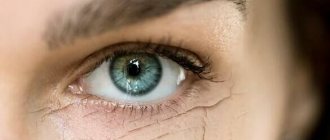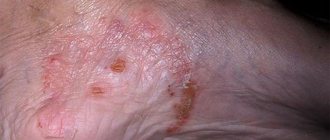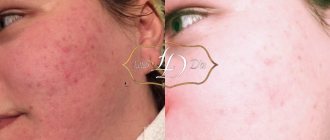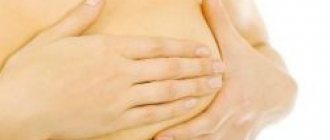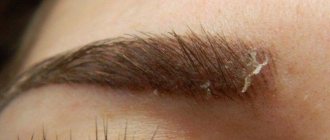Causes of acne on the forehead
Sometimes acne on the forehead appears in different categories of patients for different reasons.
Acne in teenagers
Rashes are most often associated with a hormonal surge that occurs during puberty. Under the influence of hormones, the sebaceous glands produce more sebum, in addition, its consistency and composition changes. Pores become clogged, which causes the formation of comedones: open (blackheads) and closed (small white pimples). The concentration of sebaceous glands on the forehead is high, so this area suffers more. [4, 50]
As a rule, acne resolves on its own with age, when hormonal levels return to normal. But this does not mean that the disease should be left to chance. Acne can cause psychological problems in teenagers, in addition, moderate to severe acne can leave behind scars and spots, so you need to consult a specialist and start treatment on time, as well as take proper care of your skin.
Rashes in women
The activity of the sebaceous glands in women can also be associated with hormonal surges, for example, during menstruation and menopause. Therefore, girls often have to go with acne problems not only to a dermatologist, but also to a gynecologist-endocrinologist.
You can also explain why rashes appear by making mistakes in care, since girls often overdo it with hygiene or, on the contrary, forget to remove makeup at night, which can cause clogged pores. [4, 50]
Acne in men
Men have thicker skin than women and produce more sebum, meaning they are more prone to acne. Male hormones – androgens – can also influence the appearance of acne. They activate the sebaceous glands, especially in the forehead area. Therefore, men should also pay more attention to facial care. [4, 50]
There are other reasons for the occurrence of rashes that are common to all patients [4, 50]:
- use of cosmetics with comedogenic components;
- poor nutrition;
- mechanical impact (rubbing, pressing);
- stress;
- heredity.
Finding out the causes of acne is important for prescribing treatment. They need to be clarified together with a specialist.
Causes of rashes
A rash on the forehead turns out to be an alarming signal, indicating that certain problems have appeared in the human body. This requires careful attention to your appearance and your own health. The disease must be detected on time and treatment must be started in a timely manner.
The rash is usually expressed by a change in the appearance of the skin. At the moment, there are many known diseases that are accompanied by the appearance of a rash without fail. However, there are also diseases in which rashes may or may not appear.
It should be noted that there are a variety of possible reasons that may cause a rash on the forehead:
- Due to inflammatory processes inside the human body. In particular, the respiratory tract and intestines can become inflamed (dysbacteriosis can occur there), the functioning of the reproductive system is disrupted, blood vessels become ill, and so on.
- Due to the fact that the sebaceous glands are clogged, acne or comedones occur. A very favorable environment is created for some microorganisms involved in creating the focus of inflammation, after which neighboring tissues are also affected. The occurrence of the same comedones, for example, should be considered a very serious disease, since the reasons may be not only hygienic, but also related to problems in the internal organs. Then cosmetic procedures alone will not do.
- Due to poor nutrition and bad habits. The digestive system can begin to function poorly if you indulge in too much fatty foods, eat a lot of sweets, drink a lot of alcoholic beverages, and so on.
- Due to the fact that the hair follicles and sebaceous glands are clogged with horny masses and sebum. Milia appear, expressed as a white rash and formed in the same way as comedones. But they are not inflammatory elements and a dermatologist can remove them without difficulty.
- Due to allergic reactions. In this case, a red rash, urticaria, and contact dermatitis appear. Often such diseases are accompanied by itching and can be relieved with antihistamines. You can get rid of allergies after identifying and getting rid of the allergen directly.
- Due to streptococcal infections and other skin diseases.
- Due to vitamin deficiency, when the body lacks vitamins. Sometimes rashes can happen, on the contrary, due to an excess of vitamins. That is why you should eat more healthy fruits and vegetables, and take multivitamin complexes.
Common symptoms and manipulations in dermatology:
- Skin rashes
- Calling a dermatologist to your home
- Itching in the urethra
- Itchy skin
- Skin rash
- Prevention of casual sex
- Skin neoplasms
- Pyoderma
- Pityriasis rosea
- Streptoderma
- Scabies
- Peeling skin
- Fungal infections
- Skin infection
- Pus on the skin
- Blisters on the skin
- Papillomas on the foreskin
- Sexually transmitted diseases
- Skin structure
Pimples on the forehead: which organ is affected?
There is a myth that the location of rashes on the face and body may indicate problems with internal systems. According to the acne map, this area is responsible for [208]:
- gallbladder - rashes are located along the hairline;
- intestines – rashes are located in the central part;
- the functioning of the cardiovascular system - the rashes are located above the eyebrows.
Acne in this area is taken as a sign of dysfunction of the bladder, sludge in the body, frequent stress, and poor nutrition. There is no scientific evidence of how the organ and the pimple on the forehead are connected, so you should not use this hypothesis in the process of acne treatment. [208]
Treatment methods for facial rashes
Modern gastroenterology has an extensive range of means to eliminate the causes of rashes. In each case, accurate diagnosis and treatment is carried out according to individual indications and may include various methods:
- microbiological examination;
- Ultrasound of internal organs;
- diet therapy;
- drug treatment;
- physiotherapy;
- herbal medicine and others.
Our center has unique capabilities to solve any gastroenterological problems. Applications are accepted around the clock. We are ready to provide professional assistance with maximum urgency.
How to remove acne on forehead?
To get rid of acne, you must definitely consult a specialist, but you also need to change a number of habits that can provoke acne [211]:
- Go through your cosmetics. Make it a habit to buy cosmetic products labeled “non-comedogenic.” Of course, the issue of comedogenicity is very individual, but this way you can reduce the risk of developing acne. In winter, you can pay attention to thick creams, but in summer it is better to choose light fluids.
- Eat right. Eliminate fast carbohydrates from your diet - bread, chocolate, cakes, etc. Try a low-carbohydrate diet, it can help balance the sebaceous glands. The same can be said about avoiding lactose-containing products.
- Monitor your everyday habits. Frequently touching your forehead, for example, when trying to straighten your bangs, drying your hands, body and face with the same towel, sleeping with a pet, which often lies on the pillow. All this can lead to rashes.
- Change your approach to skin care. Overdrying the skin with aggressive cosmetics leads to the destruction of the lipid layer. The skin begins to secrete more sebum in an attempt to protect itself. It would be more correct to switch to gentle care - peelings instead of highly abrasive scrubs, cleansing masks, moisturizing creams, giving up soap in favor of gels and foams.
Of course, care alone will not be enough and anti-acne therapy is needed, which should be selected by a specialist.
Symptoms
Speaking about the symptoms of prickly heat, it is necessary to immediately touch upon such a point as the types of irritation, because each type has its own manifestations.
The simplest and safest form is crystalline prickly heat. It manifests itself in small (up to a millimeter) painless rashes - these are small blisters that are located next to each other and can merge. Such rashes are localized on the neck, face, forehead, torso, as well as in the bends of the legs and arms. Often this prickly heat occurs for a short time and quickly disappears with normal hygiene.
A more dangerous type of prickly heat is red (inflammatory). Its signs are the following:
- Rashes in the form of larger blisters (up to two millimeters) with red, inflamed rims. These bubbles contain cloudy contents.
- Itching, which can be quite severe and bother the patient with unpleasant sensations.
- Wet crusts. If they appear, this means that a bacterial infection has joined the usual illness in an adult - that is, a complication has arisen.
Typically, the red variety of the disease is localized in the armpits, on the stomach and skin between the buttocks, as well as on the elbows and forearms. In obese people, it often appears in the groin. Unlike the previous option, this one does not go away on its own and always requires targeted treatment.
If the course of prickly heat is complicated, the so-called papular form with acute inflammation may develop. Not only itching, but also symptoms of intoxication appear here. The skin is painful, the patient's condition is complex. This disease can only be cured with specially selected medications - in some cases this requires more than one month.
Another variant of prickly heat in adults is apocrine. It is associated with the work of special glands that are located on the areola of the nipple, in the anus, armpits, and also in women in the labia majora. A small rash appears in these places, as well as specific accumulations in the area of the glands. These formations often burst right inside the skin and an infectious process joins them. In this case, the help of specialists is also required.
Are you experiencing symptoms of heat rash?
Only a doctor can accurately diagnose the disease. Don't delay your consultation - call
Acne in men after 30 years
By this age, natural fluctuations in hormonal levels should disappear, so the appearance of acne on the face or back is a reason to be wary. A similar picture may indicate a metabolic imbalance in the body and a disorder of lipid metabolism. In addition, after 30 years of age, acne can occur in men due to problems with the functioning of the endocrine system (thyroid and gonads).
The rash can also be a symptom of follicular hyperkeratosis. It is manifested by excessive growth of the stratum corneum of the skin and disruption of the natural process of desquamation of the epidermis. This leads to blockage of the mouths of the hair follicles with epidermal scales. Follicular hyperkeratosis is associated with a deficiency of vitamins A and C.
In addition, the back in men is an area of increased sweating. Sweat irritates the skin and can cause inflammation to appear on it. Against the background of hypersecretion of sebum caused by fluctuations in hormones or metabolic disorders, colonies of Propionibacterium acnes bacteria, the main provocateurs of acne, rapidly develop.
Men over 30 years old should not neglect the problem of acne and self-medicate. Indeed, behind this seemingly harmless symptom there may be diseases that require medical attention.
